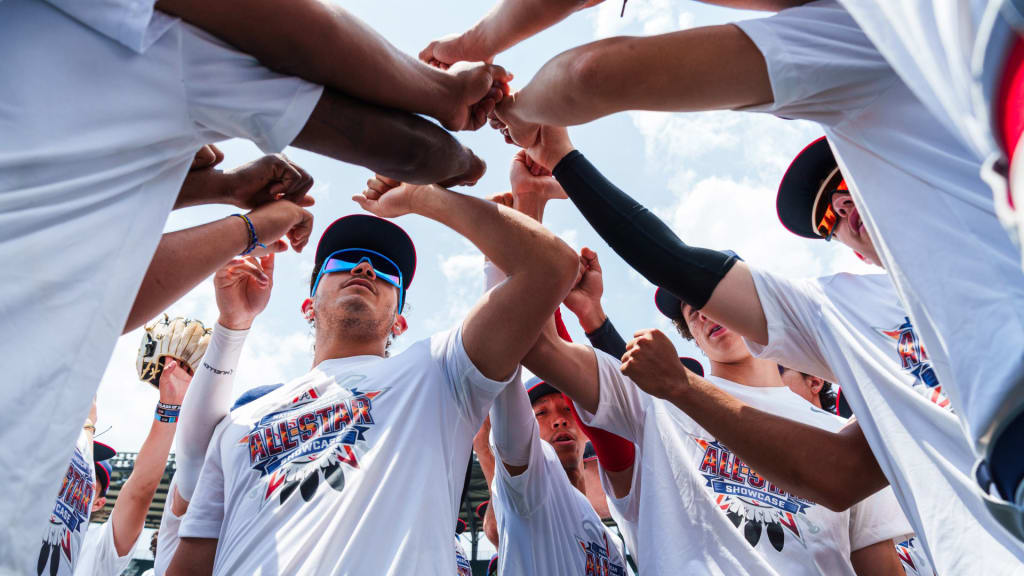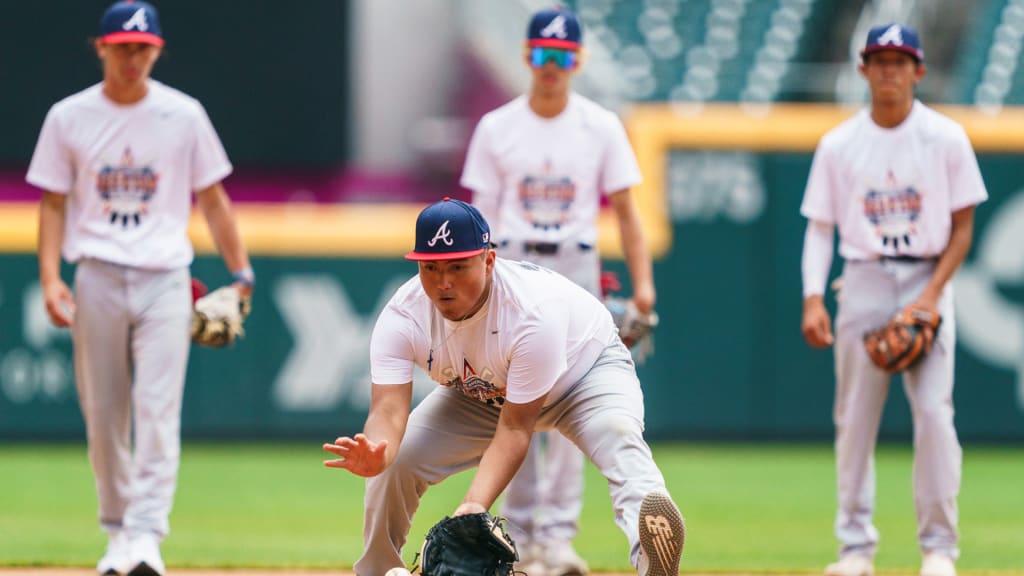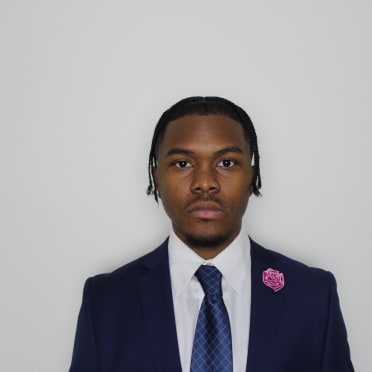
ATLANTA -- Emiliano Garcia couldn’t find the words on what it meant to be at Truist Park.
It was the 16-year-old sophomore’s first time at a Major League ballpark. From Cherokee, N.C., he started playing baseball when he was in elementary school. He pursued football and basketball but lost the love for those sports. But he has always enjoyed playing baseball, and he hopes to play it in college when he graduates from Cherokee High School.
“Baseball is the sport when I'm on the field, I feel happy,” said Garcia, who plays shortstop and left field. “I feel pumped. I feel excited every time I get to practice anywhere. And coming here gave me a big ol’ shock.”
Garcia was one of the top 50 baseball players of Native American descent, who were selected to the second-annual Native American All-Star Baseball Showcase. The two-day event had representation of over 30 tribal affiliations across regions in the United States and Canada.
The event was an opportunity for players to gain exposure while learning new skills in front of Atlanta Braves and college scouts. The select few participated in a pro-style workout Saturday that focused on defensive work, fielding, throwing and catcher pop times. On Sunday, players played in a nine-inning showcase game.
“We're really excited about being able to provide opportunity and access for those that may not be able to play in a Major League city [or] Major League ballpark and then also have them in front of college coaches and professional scouts,” Braves senior director of alumni relations Greg McMichael said.

The inaugural showcase took place in July 2022 and received a positive response from the Braves and kids, which sparked the encore. Mike Stopp, who is a member of the Braves Native American Working Group, said more recruiters attended this year, and the players will have better packages, filled with personalized data and analytics, that they can use to send to recruiters.
“The whole point of it is a lot of our American Indian athletes don't get the exposure that they see in more urban areas,” Stopp said. “We have the talent. We have the natural athleticism, but sometimes they don't get the opportunity to be seen by big schools by the recruiters and by scouts.
“This opportunity here not only gets them the chance to learn new baseball skills, but it also gives them that exposure that they don't normally get.”
One coach that worked with the players was former Braves center fielder Marquis Grissom. When training, he gauged their talent level and baseball IQ and offered tips and nuggets when necessary. One area of growth he saw players should work on is their strength.
“Some of these guys are trying to launch the ball [but] just aren’t quite physically strong enough to support what they're trying to do,” Grissom said. “So I suggest speed and agility, working out, getting more explosive, but other than that, they're athletic, and they know the game.”
In a matter of days, Garcia, who represents the Eastern Band of Cherokee Indians in North Carolina and the Ohkay Owingeh tribe in New Mexico, and the rest of the players met one another and coaches to learn and grow together. Each All-Star gained new skills, such as drop stepping, baserunning and reading balls, that changed how they play baseball.
“It was interesting, working out like pros,” said 17-year-old center fielder Jordan Davis, who represents the Mississippi Band of Choctaw Indians. “It's just a great experience. I loved it.”
Stopp compared the Native American All-Star Showcase to the 1989 film, “Field of Dreams.”
“‘Build it, they will come,’” Stopp said. “It's a whole concept that we have behind the showcase. We're building it. The Braves are great partners in this, and I think that we're going to see Native athletes get to go to big schools because of it and have a career in athletics that they wouldn't otherwise have.”
